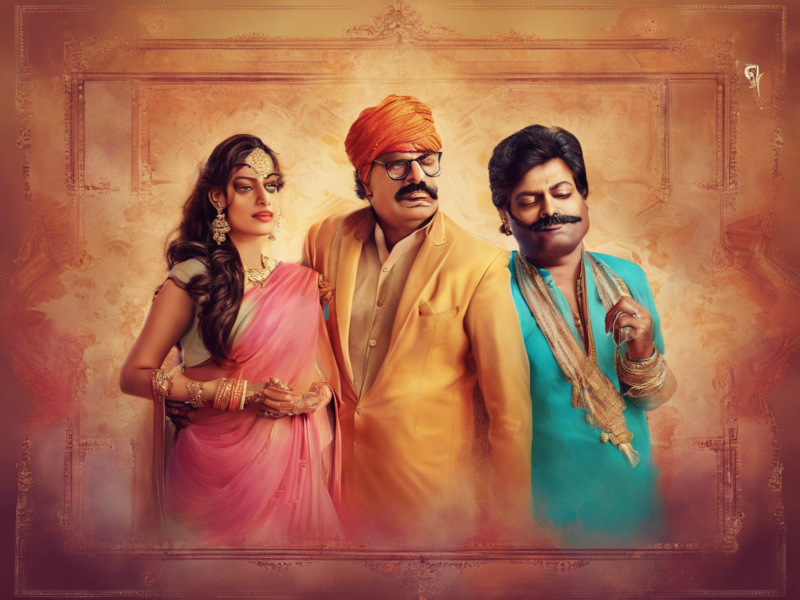Introduction
Amar Singh Chamkila, often referred to as the “Elvis of Punjab”, was a revolutionary figure in the Punjabi music industry during the 1980s. He, along with his wife and singing partner, Amarjot, created a legacy through their catchy and controversial songs that resonated with the masses. Despite their tragic demise in 1988, their music continues to be celebrated and revered by audiences worldwide. In recent years, there has been a surge in interest in bringing Chamkila’s iconic songs to the big screen. This article explores the journey of Amar Singh Chamkila and Amarjot’s music, the impact of their songs, and the potential for a cinematic adaptation of their legendary discography.
The Rise of Amar Singh Chamkila and Amarjot
Amar Singh Chamkila, born in Dugri Village in Punjab, started his music career in the late 1970s. Known for his bold and unconventional lyrics, Chamkila challenged societal norms through his songs that touched upon themes of love, politics, and social issues. His wife, Amarjot, joined him in creating electrifying duets that captivated audiences. Together, they released numerous hit songs that propelled them to stardom within the Punjabi music industry.
The Impact of Chamkila’s Music
Chamkila’s music was not just about entertainment; it was a reflection of the ground realities of Punjab during that time. His songs often highlighted the struggles of the common man, the political turmoil, and the changing cultural landscape of the state. Tracks like “Pehle Lalkare Naal” and “Takue Te Takua” showcased Chamkila’s storytelling prowess and his ability to connect with the masses.
Exploring Cinematic Adaptations
In recent years, there have been discussions within the Punjabi film industry about adapting Chamkila’s life story and music into a cinematic experience. The idea of reliving Chamkila’s journey on the big screen has piqued the interest of filmmakers and audiences alike. The biopic would not only celebrate Chamkila and Amarjot’s music but also shed light on their tumultuous personal lives and the controversies that surrounded them.
Challenges and Considerations
Adapting the life and music of such a legendary figure comes with its own set of challenges. One of the main concerns is doing justice to Chamkila’s legacy and ensuring that his story is portrayed authentically. Balancing the portrayal of his rebellious persona and his impact on Punjabi music while also delving into the darker aspects of his life would require a nuanced approach from the filmmakers.
The Potential for Success
Despite the challenges, a well-executed cinematic adaptation of Chamkila’s music has the potential to be a blockbuster hit. His songs have a timeless quality that continues to resonate with audiences of all ages. The electrifying energy of tracks like “Jatt Di Dushmani” and “Ki Jor Gariban Da” would translate beautifully to the visual medium, creating an immersive experience for viewers.
Conclusion
Amar Singh Chamkila and Amarjot left an indelible mark on the Punjabi music industry with their bold and unforgettable songs. Their music continues to be a source of inspiration for artists and fans alike. As discussions around a cinematic adaptation of their journey gain traction, it is essential to honor the legacy of these legendary musicians while introducing their iconic music to a new generation of listeners. A biopic celebrating the life and music of Chamkila and Amarjot would not only be a fitting tribute to their artistry but also a celebration of Punjab’s rich musical heritage.
FAQs
Q1: Who was Amar Singh Chamkila?
A1: Amar Singh Chamkila was a pioneering Punjabi singer known for his revolutionary music and bold lyrics during the 1980s.
Q2: What impact did Chamkila’s music have on the Punjabi music industry?
A2: Chamkila’s music challenged societal norms and highlighted the struggles of the common man, making him a revolutionary figure in the industry.
Q3: What are some of Chamkila’s most famous songs?
A3: Some of Chamkila’s iconic songs include “Pehle Lalkare Naal”, “Takue Te Takua”, “Jatt Di Dushmani”, and “Ki Jor Gariban Da”.
Q4: Why is there interest in a cinematic adaptation of Chamkila’s music?
A4: The potential for a cinematic adaptation lies in the timeless quality of Chamkila’s music and the impact it continues to have on audiences.
Q5: What are the challenges in adapting Chamkila’s life story for the big screen?
A5: The main challenges include portraying Chamkila’s legacy authentically while addressing the controversies and complexities of his personal life.
Q6: How did Amar Singh Chamkila and Amarjot contribute to the Punjabi music industry together?
A6: Amar Singh Chamkila and Amarjot created electrifying duets that resonated with audiences, contributing to their stardom in the Punjabi music scene.
Q7: What themes did Chamkila’s songs usually touch upon?
A7: Chamkila’s songs explored themes of love, politics, social issues, and the changing cultural landscape of Punjab.
Q8: What was unique about Chamkila’s storytelling in his music?
A8: Chamkila’s storytelling was bold and unconventional, often challenging societal norms and reflecting the ground realities of Punjab during his time.
Q9: How did Chamkila earn the title of the “Elvis of Punjab”?
A9: Chamkila’s charismatic stage presence, rebellious attitude, and revolutionary music style led to him being compared to the legendary rock ‘n’ roll icon Elvis Presley.
Q10: What is the enduring legacy of Amar Singh Chamkila and Amarjot’s music?
A10: The enduring legacy of their music lies in its ability to resonate with audiences across generations and continue to inspire artists in the Punjabi music industry.




